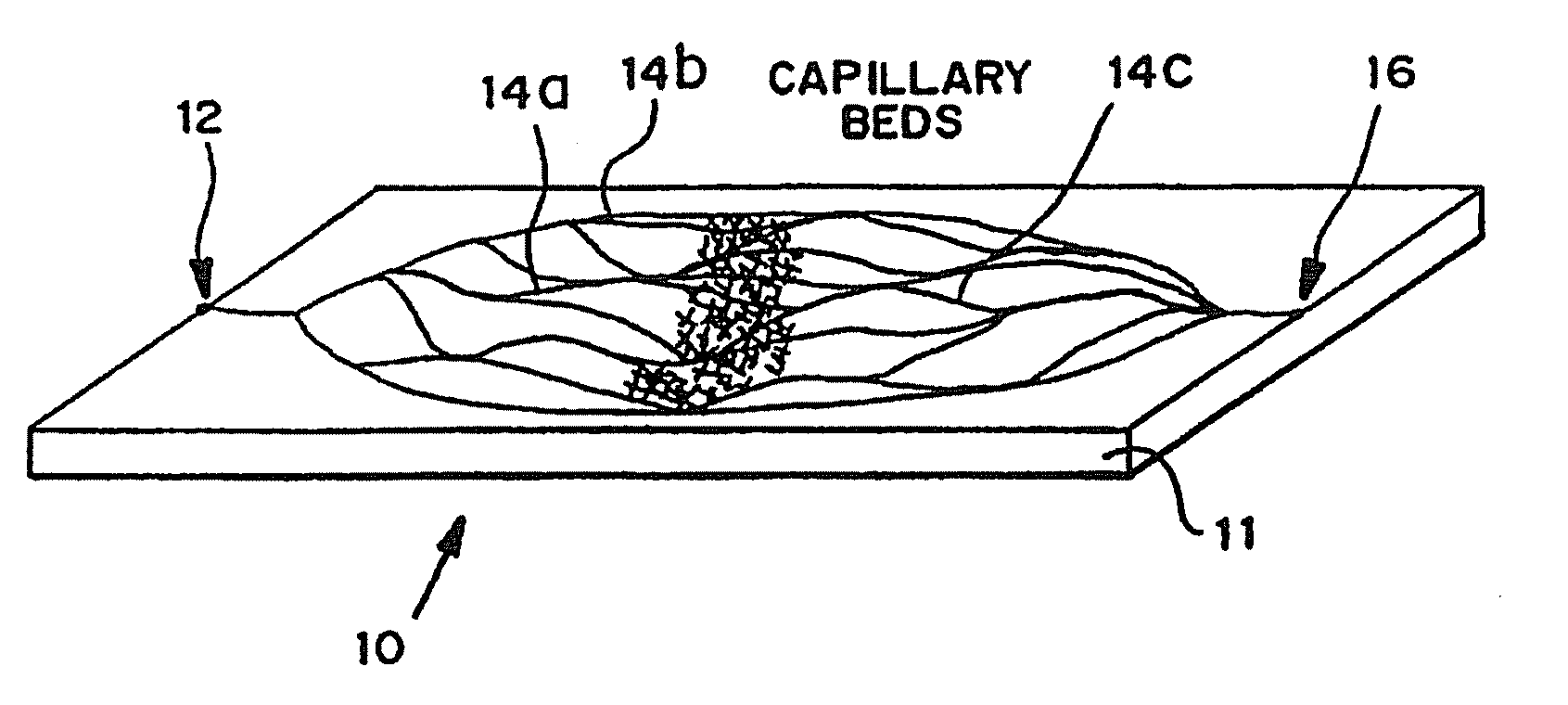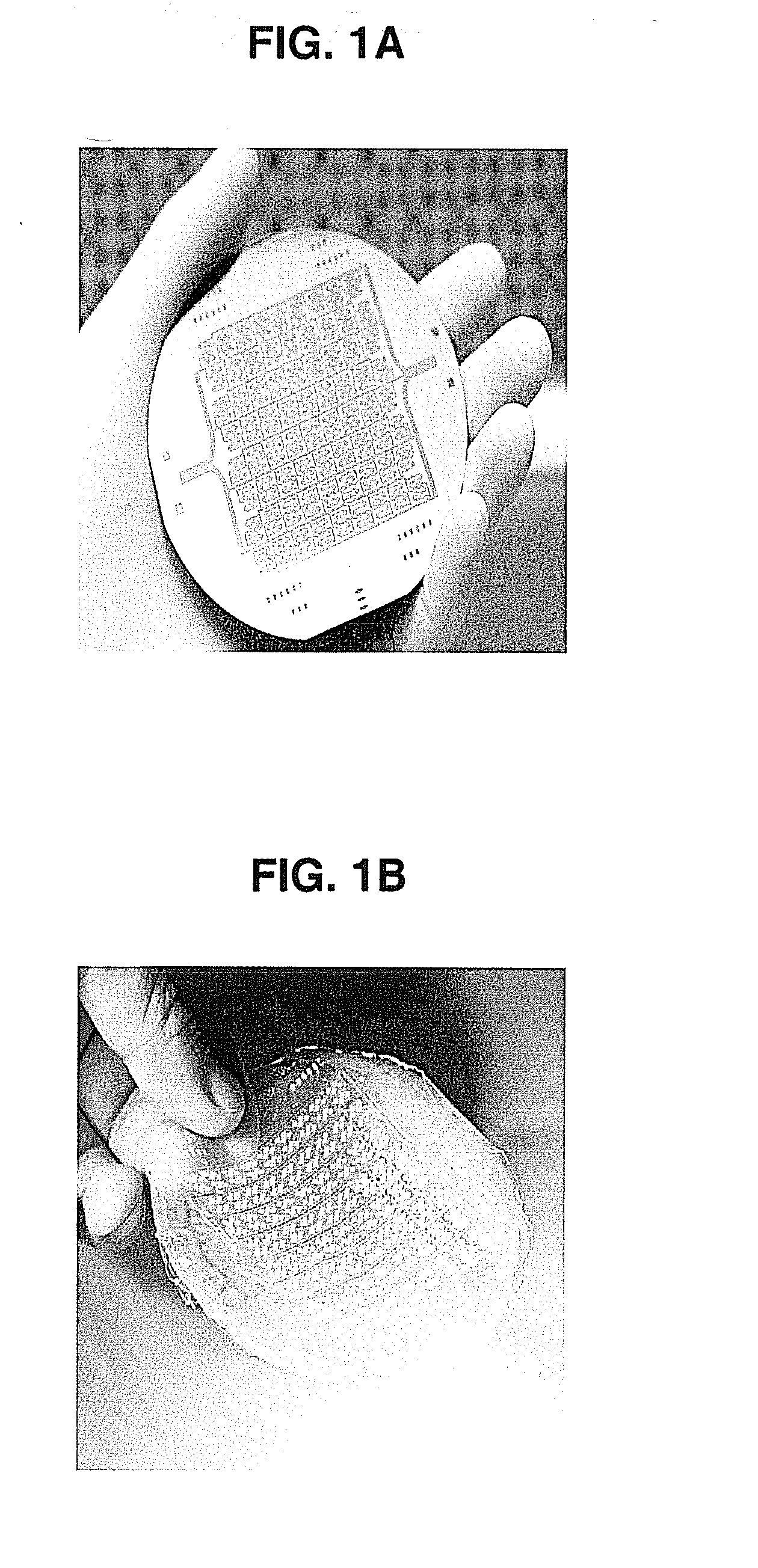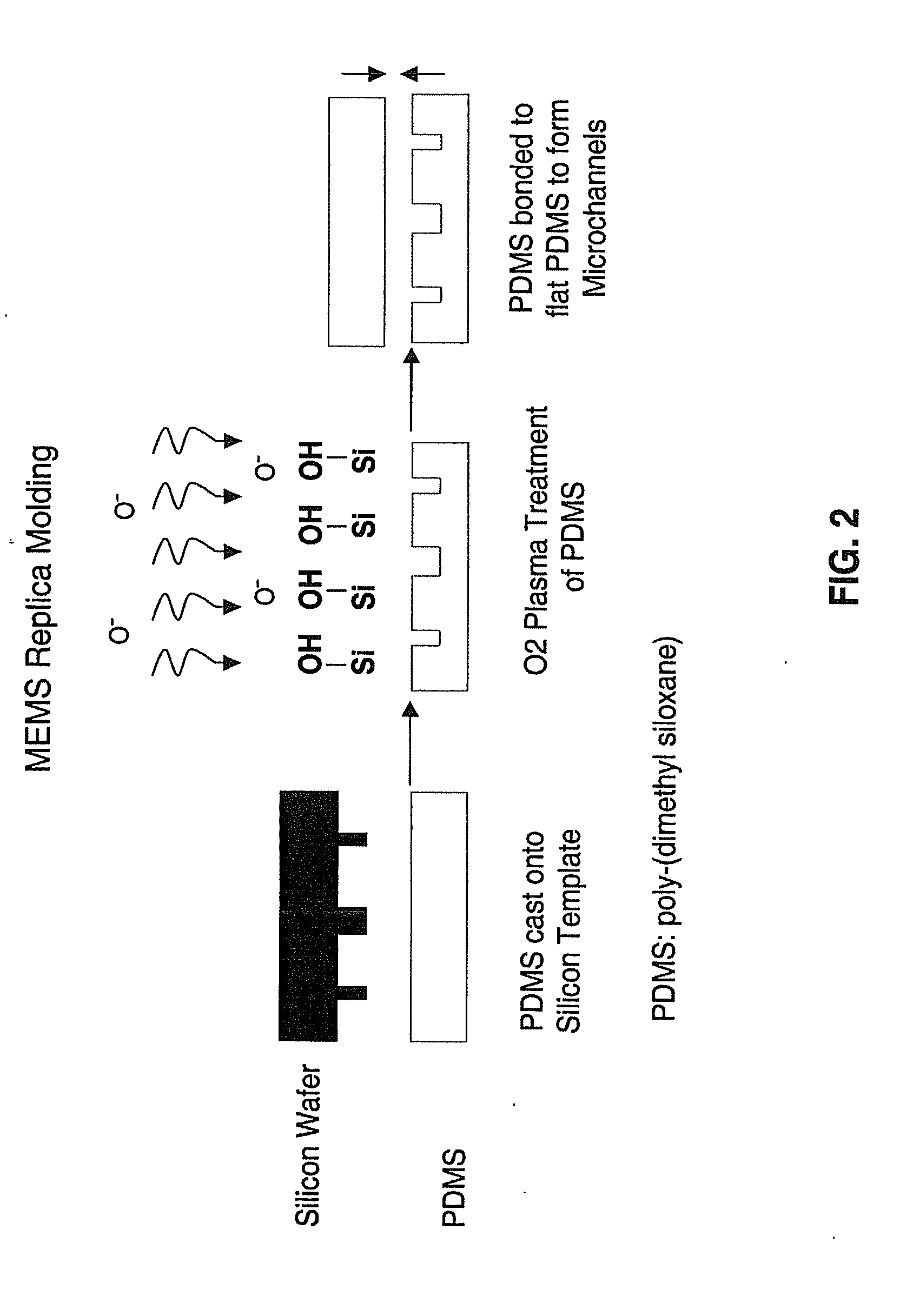Fabrication of vascularized tissue using microfabricated two-dimensional molds
a two-dimensional mold and vascularization technology, applied in the field of organ transplantation and reconstructive surgery, can solve the problems of countless patients suffering, the severe shortage of donor organs available to these patients remains the crux of the problem, and the organ shortage has become critical and continues to worsen
- Summary
- Abstract
- Description
- Claims
- Application Information
AI Technical Summary
Benefits of technology
Problems solved by technology
Method used
Image
Examples
example 1
Micromaching of Template to Tissue Engineer Branched Vascularized Channels for Liver Fabrication.
[0170]Micromachining technologies were used on silicon and pyrex surfaces to generate complete vascular systems that can be integrated with engineered tissue before implantation. Trench patterns reminiscent of branched architecture of vascular and capillary networks were etched using standard photolithographic techniques onto silicon and pyrex surfaces to serve as templates. Hepatocytes and endothelial cells were cultured and subsequently lifted as single-cell monolayers from these two dimensional molds. Both cell types were viable and proliferative on these surfaces. In addition, hepatocytes maintained albumin production. The lifted monolayers were then folded into compact three-dimensional tissues. The goal is to lift these branched vascular networks from two-dimensional templates so that they can be combined with layers of parenchymal tissue, such as hepatocytes, to form three-dimensi...
example 2
[0212]Endothelialized Microvascular Networks Grown on Micromachined Pyrex® Templates for Tissue Engineering of Vital Organs
[0213]This Example shows the design, modeling, and experimental / computational testing of the endothelialized microvascular matrices grown on micromachined Pyrex® templates. Patterns of microvascular networks were etched using microfabrication technologies on Pyrex® wafers. The pattern consisted of 10 generations of bifurcations from a single inflow channel of width 3 mm down to channels of width of 30 μm.
[0214]The channels were then collected to a single outflow. All channels were etched to the same depth of 30 μm. The Pyrex® wafer was sealed to a flat silicone rubber sheet of the same size. Endothelial cells harvested from rat lung were successfully seeded and expanded under continuous flow conditions in this microvascular network. Red blood cells harvested from rat were heparinized and perfused into the endothelialized channels, and successfully collected at t...
example 3
[0218]Microfluidics Device for Tissue Engineering Microvasculature: Endothelial Cell Culture
[0219]In this Example, the fabrication of the microfluidic mold, in vitro seeding, and extended cell culture in the mold is demonstrated. Capillary networks were fabricated in biocompatible PDMS, sterilized, coated with cell adhesion molecules, and seeded with cells. Cell-containing molds were then connected to a closed-loop bioreactor for long-term culture. Continuous-flow culture of endothelial cells for up to 4 weeks without occlusion or contamination was achieved.
[0220]Traditional soft lithography microfluidics were used as a prototype matrix. These cell-containing microfluidics are capable of supporting long-term culture in vitro, because in vitro expansion of cells prior to implantation can take several weeks. The prototype matrix is designed to supply sufficient oxygen and nutrients and to remove excretory products while avoiding large shear stresses. The matrix is useful for long-term...
PUM
 Login to View More
Login to View More Abstract
Description
Claims
Application Information
 Login to View More
Login to View More - R&D
- Intellectual Property
- Life Sciences
- Materials
- Tech Scout
- Unparalleled Data Quality
- Higher Quality Content
- 60% Fewer Hallucinations
Browse by: Latest US Patents, China's latest patents, Technical Efficacy Thesaurus, Application Domain, Technology Topic, Popular Technical Reports.
© 2025 PatSnap. All rights reserved.Legal|Privacy policy|Modern Slavery Act Transparency Statement|Sitemap|About US| Contact US: help@patsnap.com



